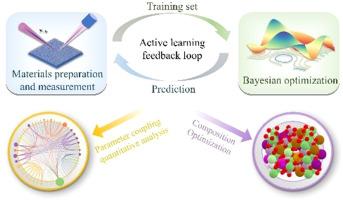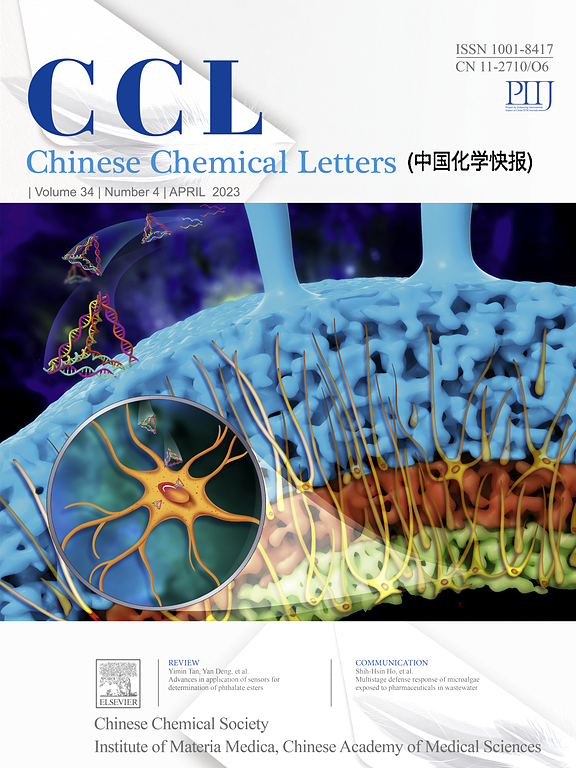通过主动学习高通量筛选高能量密度 LiMn1-xFexPO4
IF 9.4
1区 化学
Q1 CHEMISTRY, MULTIDISCIPLINARY
引用次数: 0
摘要
具有高能量密度的锂离子电池(LiBs)在智能电网和便携式电子产品中大受欢迎。LiMn1-xFexPO4 (LMFP) 被认为是正极的主要候选材料,它有可能将 LiFePO4 (LFP) 的低成本与 LiMnPO4 (LMP) 的高理论能量密度结合起来。然而,由于参数的复杂性,定量研究铁/锰比率与所产生的能量密度之间的复杂耦合关系具有挑战性。开发一种快速构建多参数映射的通用方法至关重要。在这项工作中,我们提出了一种主动学习引导的高通量工作流程,用于定量预测 LMFP 的铁/锰比和能量密度映射。仅通过 5 个样品就从 81 种阴极材料中有效筛选出了最佳成分(LiMn0.66Fe0.34PO4)。模型指导下的电化学分析表明,铁/锰比与电化学特性(包括离子迁移率和阻抗)之间存在非线性关系,从而阐明了 LMFP 的定量化学成分-能量密度图谱。结果证明了该方法在高通量筛选锂电池阴极材料方面的有效性。本文章由计算机程序翻译,如有差异,请以英文原文为准。

High-throughput screening of high energy density LiMn1-xFexPO4 via active learning
Lithium-ion batteries (LiBs) with high energy density have gained significant popularity in smart grids and portable electronics. LiMn1-xFexPO4 (LMFP) is considered a leading candidate for the cathode, with the potential to combine the low cost of LiFePO4 (LFP) with the high theoretical energy density of LiMnPO4 (LMP). However, quantitative investigation of the intricate coupling between the Fe/Mn ratio and the resulting energy density is challenging due to the parametric complexity. It is crucial to develop a universal approach for the rapid construction of multi-parameter mapping. In this work, we propose an active learning-guided high-throughput workflow for quantitatively predicting the Fe/Mn ratio and the energy density mapping of LMFP. An optimal composition (LiMn0.66Fe0.34PO4) was effectively screened from 81 cathode materials via only 5 samples. Model-guided electrochemical analysis revealed a nonlinear relationship between the Fe/Mn ratio and electrochemical properties, including ion mobility and impedance, elucidating the quantitative chemical composition-energy density map of LMFP. The results demonstrated the efficacy of the method in high-throughput screening of LiBs cathode materials.
求助全文
通过发布文献求助,成功后即可免费获取论文全文。
去求助
来源期刊

Chinese Chemical Letters
化学-化学综合
CiteScore
14.10
自引率
15.40%
发文量
8969
审稿时长
1.6 months
期刊介绍:
Chinese Chemical Letters (CCL) (ISSN 1001-8417) was founded in July 1990. The journal publishes preliminary accounts in the whole field of chemistry, including inorganic chemistry, organic chemistry, analytical chemistry, physical chemistry, polymer chemistry, applied chemistry, etc.Chinese Chemical Letters does not accept articles previously published or scheduled to be published. To verify originality, your article may be checked by the originality detection service CrossCheck.
 求助内容:
求助内容: 应助结果提醒方式:
应助结果提醒方式:


